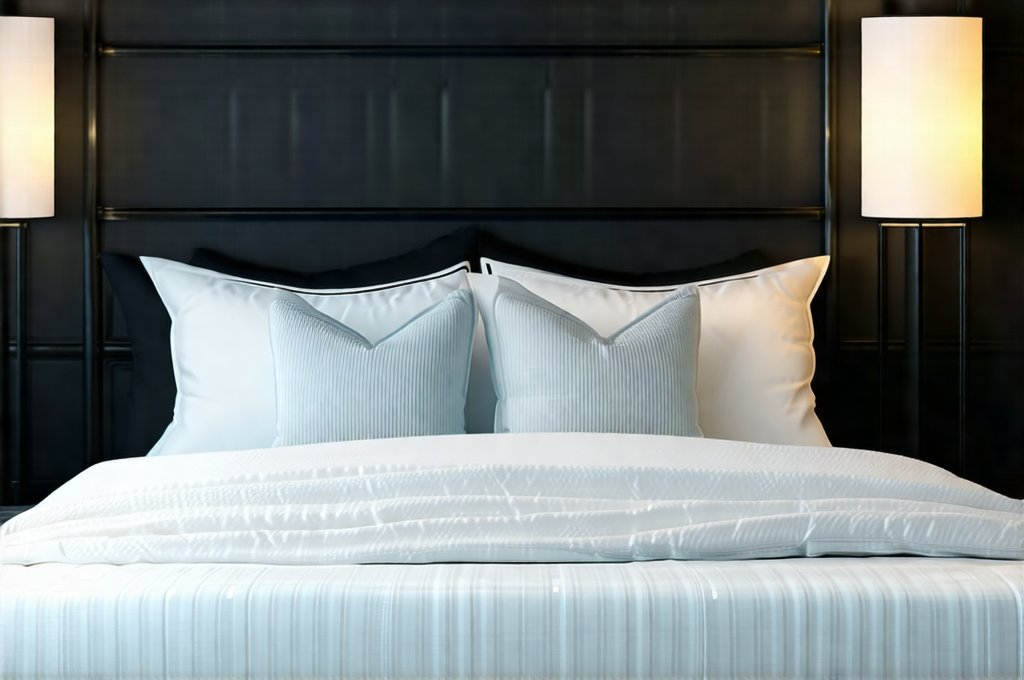The bedroom: often considered a sanctuary, a place for rest, rejuvenation, and personal expression. Yet, for many, it’s a space that falls short of its potential – cluttered, stressful, or simply lacking in personality. We tend to prioritize other rooms when decorating, leaving the bedroom as an afterthought. This is a mistake! A well-designed bedroom isn’t just about aesthetics; it’s about cultivating a haven that supports your physical and mental wellbeing, allowing you to truly recharge. It’s about creating a space where you want to spend time, not one that contributes to anxiety or sleep deprivation.
The key lies in balance – balancing comfort with style, functionality with aesthetic appeal, and personal preference with principles of restful design. This isn’t about achieving magazine-perfect interiors; it’s about crafting an environment that resonates with you, promoting relaxation and restoring your energy levels. It’s a space where the colors soothe, the textures invite touch, and the overall atmosphere whispers tranquility. We often underestimate the power of our surroundings, but a thoughtfully designed bedroom can be transformative, impacting everything from sleep quality to mood and productivity.
Creating a Restful Foundation: Color & Light
Color profoundly impacts our emotions and psychological state. In the bedroom, we want hues that promote calmness and serenity. Think cool tones like blues, greens, and lavenders – these are known for their soothing properties. Neutral palettes, such as soft grays, creams, and whites, also work beautifully, creating a sense of spaciousness and tranquility. Avoid bright, stimulating colors like reds or oranges, which can be energizing but disruptive to sleep. If you’re drawn to bolder shades, use them sparingly as accents rather than dominant wall colors. The goal is to create a visual environment that feels peaceful and inviting.
Lighting plays an equally crucial role. Harsh overhead lighting should be avoided in favor of softer, more diffused sources. Layering your lighting is the key – combine ambient (overall room illumination), task (for reading or other activities), and accent lighting (to highlight décor). Dimmable lights are a fantastic investment, allowing you to adjust the intensity based on your mood and needs. Consider blackout curtains or blinds to eliminate unwanted light during sleep, and incorporate warm-toned nightlights for gentle guidance if needed. Remember that blue light emitted from electronic devices can interfere with sleep; minimize screen time before bed and consider using blue light filters.
Finally, don’t underestimate the power of natural light. Maximize daylight exposure during waking hours to regulate your body’s natural circadian rhythm. Position your bed strategically to avoid direct sunlight first thing in the morning if that disrupts your sleep. A well-lit bedroom isn’t just aesthetically pleasing; it’s essential for a healthy sleep cycle and overall wellbeing.
Prioritizing Comfort & Functionality: Furniture & Layout
The furniture you choose and how you arrange it significantly impact the functionality and feel of your bedroom. Start with the essentials: a comfortable bed, bedside tables, and adequate storage. The bed is, of course, the centerpiece, so invest in a quality mattress and bedding that supports restful sleep. Bedside tables provide convenient surfaces for lamps, books, phones, and other nighttime necessities. Storage solutions – dressers, wardrobes, under-bed storage – are crucial for keeping clutter at bay and creating a sense of order.
When arranging your furniture, prioritize flow and accessibility. Ensure there’s enough space to move around comfortably without bumping into things. Avoid obstructing doorways or windows. The placement of the bed is particularly important; ideally, it should be positioned so you can see the door but not directly in line with it (a Feng Shui principle that promotes a sense of security). Minimize technology in the bedroom – keep TVs and computers to a minimum, and avoid using your phone in bed. A clutter-free, well-organized bedroom is a more peaceful and relaxing space, promoting better sleep and reducing stress. If frequent bathroom trips disrupt your sleep, consider how you can plan your day around that need.
Creating Zones for Different Activities
A bedroom isn’t just for sleeping; it’s often used for reading, working, or simply relaxing. Consider creating distinct zones within the room to accommodate these different activities. A cozy reading nook with a comfortable chair and good lighting can provide a peaceful escape. A small desk area can be designated for work or hobbies. By defining these zones, you create a more functional and versatile space that caters to your individual needs.
- Use rugs to delineate different areas visually.
- Incorporate multi-functional furniture, such as a storage ottoman that doubles as seating.
- Keep each zone tidy and organized to maintain a sense of calm.
The Importance of Textiles & Textures
Textiles – bedding, curtains, rugs, cushions – play a vital role in creating a comfortable and inviting atmosphere. Choose soft, natural fabrics like cotton, linen, or silk for your bedding and curtains. Layering textures adds depth and visual interest to the room. A plush rug underfoot feels luxurious and cozy. Cushions and throws provide extra comfort and support.
- Consider the weight and texture of different fabrics based on the season.
- Opt for breathable materials that promote airflow and prevent overheating during sleep.
- Don’t be afraid to mix and match textures to create a more dynamic and visually appealing space.
Personalizing Your Space with Meaningful Décor
While maintaining a restful aesthetic is important, your bedroom should also reflect your personality and interests. Incorporate décor items that bring you joy and evoke positive emotions – artwork, photographs, plants, travel souvenirs. Avoid overly stimulating or cluttered displays; the goal is to create a space that feels personal and inviting without being overwhelming.
- Choose art pieces that are calming and serene.
- Display family photos in subtle frames rather than large, distracting galleries.
- Introduce indoor plants to add life and freshness to the room (and improve air quality!). Remember to choose varieties suitable for low light conditions if necessary. The bedroom should be a reflection of you, a space where you feel comfortable, safe, and inspired. If you suspect underlying issues contributing to your need for frequent bathroom visits, consider exploring subclinical cystitis and treatment options.





















